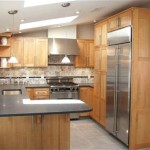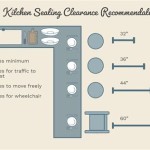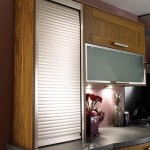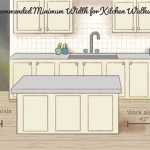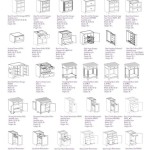Using Used Kitchen Cabinets for Storage
Repurposing used kitchen cabinets offers a cost-effective and environmentally friendly solution for various storage needs throughout the home. Whether renovating a kitchen and replacing existing cabinetry or finding discarded cabinets through salvage yards or online marketplaces, these versatile units can be transformed into practical and stylish storage solutions.
One of the primary benefits of using salvaged kitchen cabinets is the significant cost savings compared to purchasing new storage units. Often, perfectly functional cabinets are discarded during renovations, offering an opportunity to acquire quality materials at a fraction of the original price. Even cabinets requiring minor repairs can be a worthwhile investment, particularly for those with basic DIY skills.
Beyond the financial advantages, repurposing contributes to sustainability efforts by diverting materials from landfills. This reduces the demand for new resources and minimizes the environmental impact associated with manufacturing and transporting new products. By giving discarded cabinets a new life, individuals can actively participate in responsible consumption and waste reduction.
Before acquiring used kitchen cabinets, careful assessment is crucial. Inspect the cabinets thoroughly for any structural damage, such as water damage, warping, or pest infestations. Check the integrity of the doors, drawers, and hinges. While minor imperfections can often be repaired, significant damage might render the cabinets unsuitable for repurposing.
Measurements are essential for successful integration into the intended space. Carefully measure the dimensions of the cabinets, including height, width, and depth. Consider the available space in the area where the cabinets will be installed, ensuring they fit comfortably and allow for adequate access and movement. Planning the layout beforehand will help avoid unforeseen complications during installation.
Cleaning and preparing the cabinets is a necessary step before repurposing. Thoroughly clean the cabinets inside and out using a suitable cleaning solution to remove grease, grime, and any lingering odors. If the existing finish is in poor condition, consider sanding and repainting or refinishing the cabinets to match the desired aesthetic. This can significantly enhance the appearance and seamlessly integrate the cabinets into the new space.
Depending on the intended use and location, modifications might be necessary. Shelves can be added, removed, or adjusted to accommodate specific storage needs. Drawers can be replaced or repaired. Cutting down cabinets to fit a particular space is also a common modification. Basic carpentry skills and appropriate tools are typically required for these adjustments.
Used kitchen cabinets can be repurposed for a wide range of storage applications throughout the house. In the garage, they can provide organized storage for tools, gardening supplies, and automotive equipment. In laundry rooms, they can house cleaning supplies, laundry detergents, and ironing boards. Basements and attics can benefit from the added storage space for seasonal items, holiday decorations, and infrequently used belongings.
Beyond traditional storage applications, used kitchen cabinets can also be transformed into functional furniture pieces. With some creativity and modification, they can be converted into entertainment centers, bookshelves, desks, or even bathroom vanities. Adding new hardware, such as knobs and pulls, can further enhance the aesthetic appeal and customize the look.
Integrating repurposed cabinets with existing décor can create a cohesive and stylish look. Consider the overall style of the room and choose a paint color or finish that complements the existing furniture and color scheme. Adding decorative molding or trim can further enhance the visual appeal and create a more polished look. Careful consideration of the surrounding décor will ensure a seamless integration of the repurposed cabinets.
Proper installation is crucial for the functionality and longevity of repurposed cabinets. Ensure the cabinets are securely fastened to the wall or floor, especially in areas prone to moisture or humidity. Use appropriate hardware and anchoring systems to prevent tipping or shifting. Leveling the cabinets is also essential to ensure stability and proper door and drawer alignment.
The versatility of used kitchen cabinets extends beyond residential applications. Small businesses, workshops, and studios can also benefit from the affordable and adaptable storage solutions they offer. Repurposing these cabinets can contribute to a more organized and efficient workspace while minimizing costs.
By exploring creative reuse options, individuals and businesses can transform discarded kitchen cabinets into valuable storage solutions. This resourceful approach not only contributes to cost savings and sustainability but also adds a unique and personalized touch to any space.

Old Kitchen Cabinets Were Used To Make Garage Work

15 Ways To Repurpose Kitchen Cabinets For The Rest Of Your Home

What To Do With Old Kitchen Cabinets

30 Kitchen Cabinet Add Ons You Can Diy Family Handyman

Kitchen Base Cabinets What You Should Never In Lower
:strip_icc()/121035540_331772381251072_3717720175166945340_n-ae336a3237ca44c6bdddd093c7d1eb97.jpg?strip=all)
21 Kitchen Cabinet Organization Ideas You Need To Try

30 Kitchen Cabinet Add Ons You Can Diy Family Handyman

How To Organize Kitchen Cabinets In The 22 Absolutely Best Ways Cabinet Organization Layout Diy Storage

Upper Cabinets Made Into Built Ins Just Call Me Homegirl

Turning Base Cabinets Into A Kitchen Island Just Call Me Homegirl
Related Posts


